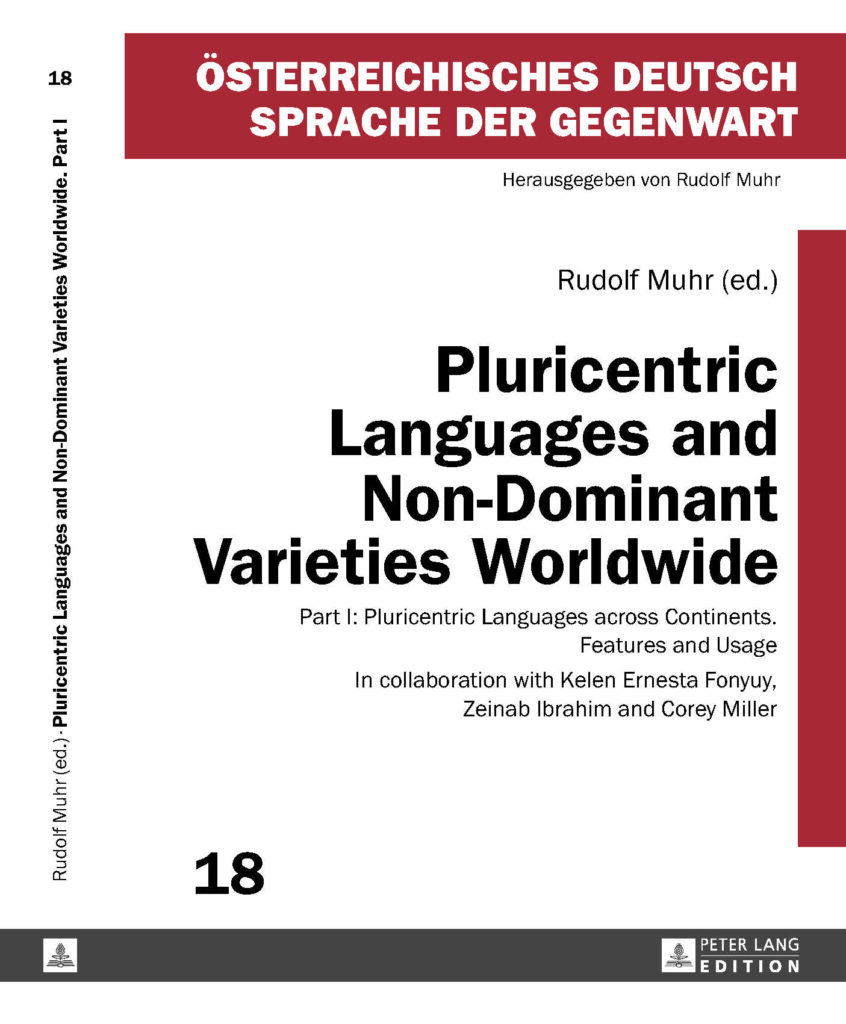„One size fits all“? Linguistic standards in the media of pluricentric language areas

Sociolinguists are studying language use in all kinds of spoken, written, and audiovisual media. Similarly, language attitude towards language use, and also the impact of media on language change is investigated. Some of these media are scripted and professionally produced, such as news broadcasts, dubbed films, and podcasts, while other media, like video blogs or posts on social media, are not necessarily. Media creators often, but not always, adhere to linguistic guidelines or language policies. They may also, sometimes without knowing it, follow certain established linguistic practices, or deliberately challenge these. In pluricentric language areas, when language is used in the media, decisions are often made in terms of which language variety to use. Such decisions usually take into consideration the main target audience. Sometimes an attempt is made to use a so-called “neutral variety”, unmarked for any specific part of the language area, to cater to the larger language area as a whole. This one-size-fits-all approach, however, is challenged by glocalisation tendencies and calls for more linguistic diversity. Moreover, the Age of Streaming opened up new possibilities with several language versions that can be offered on demand (including media accessibility). Dutch-language audiobooks, for instance, can sometimes be streamed in a Belgian and a Netherlandic Dutch version. Likewise, some audiovisual fiction for children is available in a Belgian and Netherlandic Dutch dubbed version on streaming platforms.
Pluricentric languages in different theoretical and educational contexts

This is the second of two volumes that presents part of the outcome 9th World Conference on Pluricentric Languages that took place from August 26-28 2021. The volume contains eight contributions. Seven of them were presented at the conference. A further paper was included for topicality reasons. The conference was organised by the “Working Group on Non-Dominant Varieties of Pluricentric Lan-guages (WGNDV), this time hosted by the Austrian German Research Centre in Graz. Due to the pandemic and ensuing complications for travelling, the conference was held online via ZOOM much to the satisfaction of all participants.
The conference had three focal points: (1) Pluricentric languages in the Americas; (2) The localisation of global audiovisual and print media in pluricentric language areas; (There will be an extra publication on this theme envisaged by the end of 2022); (3) General section – Pluricentric languages worldwide. The papers of this volume refer to the topics and (3) while the papers of theme (1) are pub-lished in volume (1). A separate volume concerning topic (2) is planned to be published at the end of 2022. The articles of this volume deal with theoretical and educational matters.
European Pluricentric Languages in Contact and Conflict

Preface This volume comprises 16 papers. Twelve of them were presented at the “6th World Conference of Pluricentric Languages and their non-dominant Varieties”. The overall theme of the conference was “Pluricentric Languages in Europe in Contact and Conflict”. It was held at the Constantine the Philosopher University in Nitra (Slovakia) on June 21–23 2018. Five […]
Pluricentric Languages and Non-Dominant Varieties Worldwide: New pluricentric languages-old problems

This volume comprises 30 selected papers that were presented at the “5th World Conference of Pluricentric Languages and their non-dominant Varieties (WCPCL) held at the University of Mainz (Germany) in 2017. The authors come from 15 countries and deal with 14 pluricentric languages and 31 (non-dominant) varieties around the world. The number of known PLCLs has again been extended. There are now 43 PLCLs in all. Apart from a large number of papers on Spanish, French and Portuguese, “new” and little researched PLCLs are also presented in the volume: Albanian, Hungarian, Malay, Persian, Somali and Romanian.
Pluricentric Languages and Non-Dominant Varieties Worldwide Part I: Pluricentric Languages across Continents. Features and Usage

This is the first of two thematically arranged volumes with papers that were presented at the “World Conference of Pluricentric Languages and their non-dominant Varieties” (WCPCL). It comprises papers about 21 PCLs and 17 NDVs around the world. The second volume encompasses a further 17 papers about the pluricentricity of Portuguese and Spanish. The conference […]
